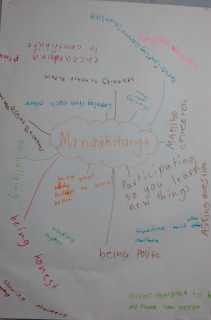Until two years ago we had four school values and decided to add 'Ako' as our fifth value. This was done because Students could make connections to the values only when they were outside in the playgrounds. We wanted our students to live and breathe these values everywhere, in the classroom..., in the playgrounds... at all times... and hence there was an addition of another value 'Ako'. So our values evolved over time.
Our school values are culturally responsive. These values are held very closely by our demographically dominant Maori and Pacific families. They were purposely chosen to be in Te Reo so that our community could make connections with our values.
It is important that we teachers in the school are role models of our values. Last term we had one of the schools who needed to evacuate because they had found asbestos in their building and it needed to be fixed before kids could be let into the building. Our principal welcomed this school and we all looked after our guests. Our principal demonstrated our school values.
Reflection - Though we have a very robust selection of values for our school I want to see these being lived and thrived in all corners. I would like to see the values being the vehicle to talk around achievement and behaviour. I want to see these values being walked in our school. So I started the Term by revisiting school values and the task for the students was to brainstorm what they meant by these values.
I felt quiet proud of them when some students said that they used it all the time in school as well as at home.
To take this a little further I framed three questions for my students:
- Did you get a chance to use your school values today? What were they?
- How did you use your school values during learning time today?
- How did you use your school values in the playground today?
I asked them to reflect on these questions during the day. At the end of the day, they had heaps to share. Have a look...






